In this article
This guide breaks down the most effective rock climbing training equipment to help you get stronger, prevent injuries, and break through performance plateaus. We’ll explore the science behind each tool, establish clear criteria for choosing the right gear for your goals, and recommend the best products on the market. You will understand the fundamental principles of climbing strength, discover the “Core 7” training tools for a holistic training system, and learn how to choose equipment based on your skill level. This guide provides expert, justified recommendations to make confident purchases for your home climbing training equipment setup.
Decoding Climbing Strength: Key Principles for Effective Training
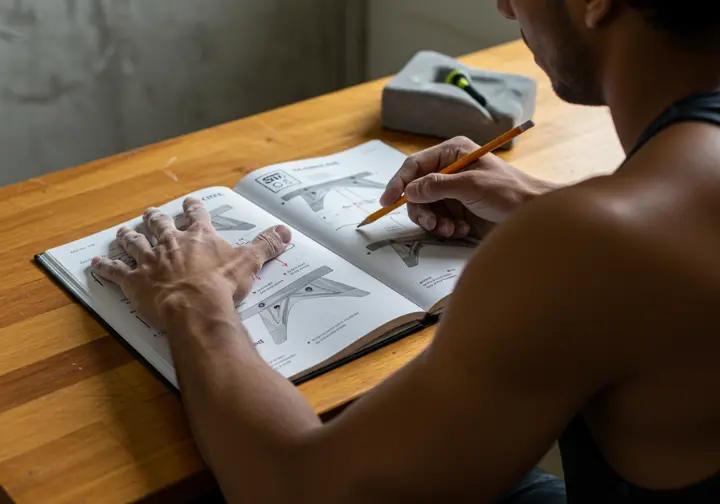
Before buying any gear, understanding how rock climbers get stronger is essential. We’ll cover the foundational principles that make strength training effective, ensuring you select tools that align with proven methodologies for strength, power, and endurance gains.
The Bedrock of Gains: Specificity & Progressive Overload
The principle of specificity dictates that your body and its muscles adapt precisely to the demands placed upon it. For climbers, this means training should mimic the movements and energy systems used on the rock, such as gripping a small climbing hold or performing powerful pulling motions. Choosing specific training equipment that directly targets these actions, like a hangboard for finger strength, is far more effective than a generic gym workout. This ensures the strength you build in each muscle translates directly to better performance on your projects.
Progressive overload is the cornerstone of all strength development, stating that to improve, you must consistently challenge your body with gradually increasing stress. This can involve using smaller climbing holds, performing more repetitions, reducing rest times, or executing more complex movements. Effective training tools are designed to facilitate this process, allowing for incremental adjustments that continuously stimulate adaptation.
Together, these principles form a powerful framework for selecting workout equipment. A climber aiming to conquer powerful bouldering problems needs tools like campus boards that train explosive strength (specificity) and allow for increasingly difficult movements (progressive overload). Conversely, a sport climber needing more stamina will benefit from hangboard repeater protocols that target the exact muscles for endurance. Failing to apply these principles is a common reason for stalled progress. A systematic training approach, where you identify a weakness and apply specific, progressively harder stress to it, is the most reliable path to becoming a well-rounded climber.
When evaluating any piece of training equipment, your first questions should be: “Does this tool train a specific aspect of climbing I need to improve?” and “Does its design allow me to make my workouts harder over time?”. Answering “yes” to both is critical for making a worthwhile investment.
The Pillars of Longevity: Consistency, Recovery & Injury Prevention
Consistent training is the engine of long-term improvement in climbing. Sporadic, intense sessions are far less effective than a regular, sustainable routine, as physiological adaptations require repeated stimulus over time. Equipment that is accessible for at-home use, such as a doorway pull-up bar or a simple hangboard setup, is invaluable because it removes barriers to consistency.
Recovery is an integral part of the adaptation process where your body rebuilds and becomes stronger. This includes adequate rest days, proper nutrition, and sufficient sleep. Neglecting recovery while continuing to train is a direct path to overtraining and injury. Proactive injury prevention is a critical mindset that involves more than just effective warming up; it requires addressing muscular imbalances inherent to climbing. Pulling muscles often become disproportionately strong compared to their opposing pushing muscles. Tools like resistance bands are essential for this antagonist arm training, which helps maintain joint health and reduces the risk of common overuse injuries.
The materials of your training equipment can also play a role in recovery. For high-contact tools like hangboards and campus rungs, wood grips training is often preferred over resin because it is significantly more skin-friendly. Minimizing skin damage allows for more frequent and productive training sessions. A holistic approach that balances training stress with intentional recovery is key to a long and healthy climbing career.
The Core 7: An Integrated Toolkit for At-Home Climbing Training
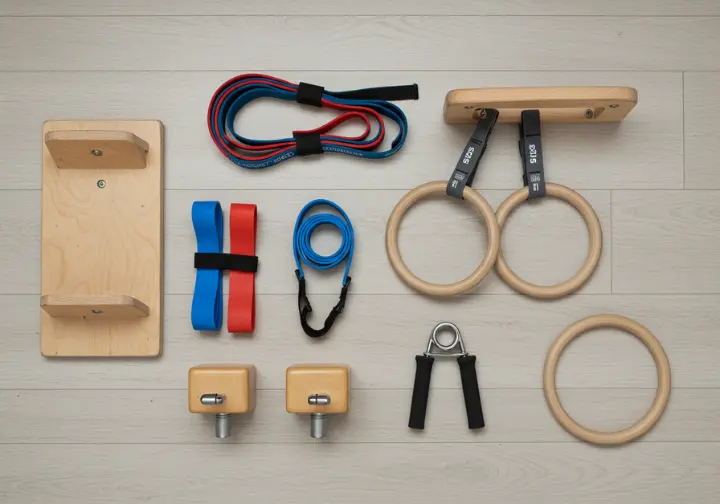
Here, we’ll detail the seven most impactful pieces of training equipment. We explore them not as isolated items, but as components of a synergistic system, explaining what each tool does and the specific aspects of climbing fitness it targets.
For Finger & Grip Strength: Hangboards, Grip Trainers & Pinch Blocks
Hangboards, or fingerboards, are the most specialized tool for developing maximal finger strength. These training boards consist of various holds that allow climbers to perform isometric hangs, strengthening the flexor tendons in the fingers and forearms. Scientific studies have validated that structured hangboard training directly improves climbing performance. A key benefit is the ability to apply highly controlled and measurable progressive overload by moving to smaller edges or adding weight. This targeted stimulus is crucial for strengthening tendons and pulleys susceptible to injury.
Grip Trainers are a broad category of portable devices designed to improve hand strength, including crushing grip and the often-neglected extensor muscles. Training the extensors—the muscles that open your hand—is vital for creating muscular balance and can help prevent common ailments like climber’s elbow. These strength trainers are excellent for warm-ups, recovery, and supplemental training.
Pinch Blocks specifically target pinch strength, a grip type that relies heavily on the thumb’s adductor muscles and is a common weakness for many climbers. Since most hangboards don’t effectively train this grip, pinch blocks are a critical complementary tool for developing the specific strength needed for squeezing narrow rock features. If your primary limitation is holding small edges, a hangboard is your priority. If you suffer from elbow pain, an extensor trainer is key.
For Pulling Power & Core Stability: Pull-Up Bars, Campus Boards & Rings
Pull-up bars are the fundamental tool for building the foundational pulling strength required for upward movement in climbing. They primarily target the lats, biceps, and shoulders, forming the core of any effective arm training program. Varying your grip and performing exercises like lock-offs are directly applicable to climbing.
Campus boards are a more advanced tool designed to develop explosive power and contact strength. Training involves ascending wooden rungs using only your hands in a high-intensity, plyometric-style workout. Due to the high stress it places on the body, it’s critical to have a solid strength base before beginning campus training to minimize injury risk.
Gymnastic rings are arguably the most versatile of strength training tools for building comprehensive upper-body and core strength. Their inherent instability forces greater recruitment of stabilizer muscles throughout the shoulders, back, and core compared to fixed equipment. This is critical for controlling body movement on steep climbs.
These three tools build upon each other: a pull-up bar builds base strength, rings add a stability challenge, and a campus board hones that strength into explosive power. A pull-up bar is the most logical starting point for a home gym.
The Ultimate Utility Tool: Resistance Bands
Resistance bands are the unsung heroes of a climber’s training toolkit, prized for their exceptional versatility. These elastic bands provide variable resistance and their applications span from warm-ups and mobility work to strength training and rehabilitation. One of their most critical uses is for antagonist muscle training. Climbing heavily develops pulling muscles, and training the opposing pushing muscles is crucial for preventing imbalances that can lead to injury. Exercises like band-resisted chest presses and shoulder external rotations are vital for joint health.
Bands are also perfect for dynamic warm-ups. Gentle movements with light resistance increase blood flow and prepare the joints for the demands of climbing, a safer approach than pre-workout static stretching. For strength training, bands can either provide assistance for exercises like pull-ups or add resistance to bodyweight movements like push-ups. They can also be integrated into a pulley system to reduce bodyweight on a hangboard, which is useful for beginners, for rehabilitation, or for advanced one-arm hang training. The benefits of resistance bands in physical therapy are well-documented for their role in safe and progressive rehabilitation.
Our Top Picks: The Best Rock Climbing Training Equipment for 2025
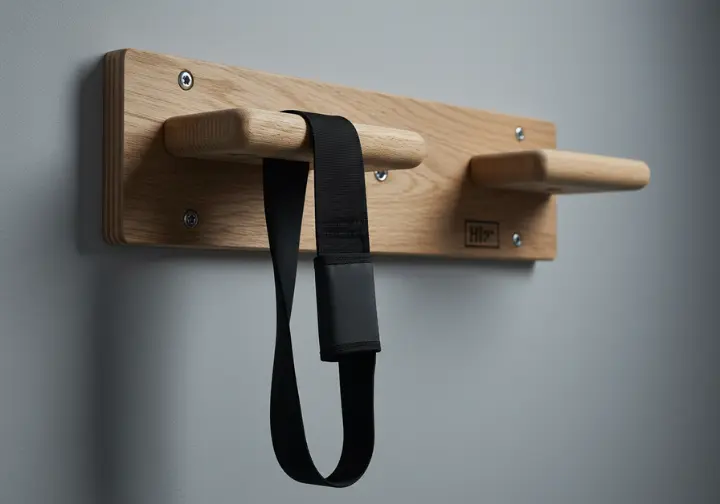
Based on our research and established expert criteria, here are our recommendations for the Core 7 training products. We’ve selected products that offer the best performance, value, and durability to meet the needs of climbers at every level.
Best Hangboards & Fingerboards
Beastmaker 1000 | Best for Skin-Friendliness and All-Around Use
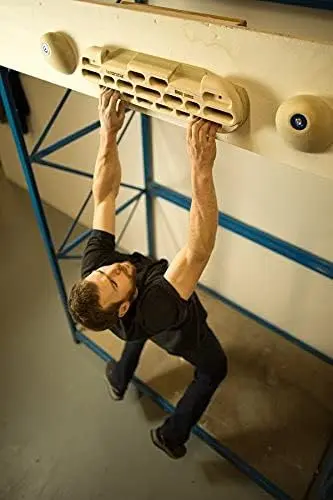
The Beastmaker 1000 is an ergonomically designed wooden hangboard ideal for climbers new to training or those looking to improve finger strength at home for grades from 5a to 7c+. Its construction from high-quality, fine-textured wood with radiused edges is exceptionally skin-friendly, a feature consistently praised by users as it minimizes finger strain and allows for more productive training. The board features a wide variety of holds, including jugs, slopers, and multi-finger pockets of varying depths, offering a versatile training board top for all-around grip improvement.
PROS
- Exceptionally Skin-Friendly: High-quality wood with a fine texture and rounded edges minimizes skin damage, allowing for more consistent training.
- Versatile Holds: Offers a great variety of holds including jugs, slopers, and various pockets suitable for all-around training.
- High-Quality & Durable: The craftsmanship ensures longevity, with many users reporting it looks and feels new after years of use.
- Space-Efficient: Its compact design is perfect for small home setups and apartments.
CONS
- Large Progression Gaps: The jumps in difficulty between hold sizes can be challenging, often requiring added weight to progress smoothly.
- Premium Price: It is priced higher than many entry-level boards, which could be a barrier for some.
- App is Not Free: The companion training app, while helpful, costs extra.
- Mounting Hardware Incomplete: Does not include dowels needed for mounting on concrete or masonry walls.
Reason to Buy: The Beastmaker 1000 is the best hangboard for climbers prioritizing skin health and all-around usability. Its beginner-to-intermediate-friendly holds and durable wood construction make it a worthwhile long-term investment.
Trango Rock Prodigy Training Center | Best for Unmatched Hold Variety and Targeted Weaknesses

The Trango Rock Prodigy Training Center stands out with its unique two-piece system, which allows each half of the board to be mounted independently. This design is a significant ergonomic advantage, enabling users to set the board to their ideal shoulder width, promoting better body alignment and reducing stress on joints. With over 30 distinct grip positions, this hangboard is exceptionally effective for climbers looking to isolate and strengthen specific weaknesses.
PROS
- Ergonomic Customization: The two-piece design allows for perfect shoulder-width alignment, enhancing comfort and training effectiveness.
- Unmatched Hold Variety: With over 30 grip positions, it enables highly specific and comprehensive training for any weakness.
- Reduced Injury Risk: Ergonomic radiuses on all holds are designed to reduce strain on finger joints.
- Skin-Friendly Texture: The specialized triple-textured resin surface provides a secure grip without being overly abrasive.
CONS
- Complex Installation: The two-piece nature requires precise alignment, making installation more challenging than single-piece boards.
- Steep Learning Curve: The sheer number of holds can be overwhelming for users new to structured hangboard training.
- Resin Material: Some climbers subjectively prefer the natural feel of wood over a resin or composite material.
Reason to Buy: This is the best hangboard for dedicated climbers who want to systematically target specific finger strength weaknesses with unparalleled customization and hold variety.
Metolius Simulator 3D | Best Budget-Friendly, All-Purpose Resin Board
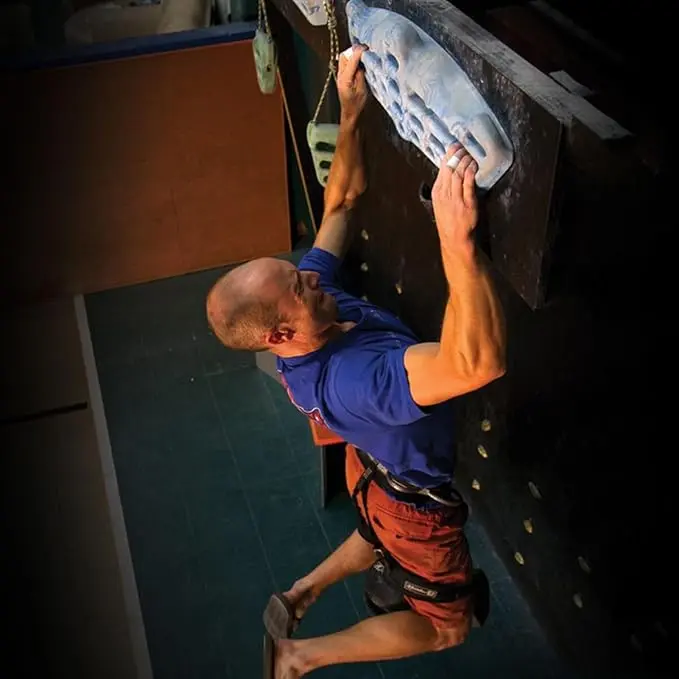
The Metolius Simulator 3D is a highly regarded all-purpose hangboard known for its massive variety of holds and ergonomic design. The holds are arranged along a broad arc that helps maintain a natural body position and minimize joint strain. Made from a durable polyurethane resin, its fine-grained texture provides a secure grip while being relatively gentle on the skin. You can find many online training guides that leverage this board’s versatility.
PROS
- Excellent Hold Variety: Offers a comprehensive range of jugs, slopers, crimps, and pockets suitable for all skill levels.
- Ergonomic and Comfortable: The arced design and fine texture provide a comfortable training experience that reduces joint strain.
- User-Friendly: Comes with a detailed training guide and mounting hardware, making it great for beginners.
- Great Value: Provides a huge range of features at a budget-friendly price point.
CONS
- Texture Can Wear Down: Some users report that the fine texture can become smoother over time with very heavy use.
- Lacks Advanced Holds: May not be challenging enough for elite-level climbers who need smaller or more difficult holds.
- Aesthetics: The “swirl” color options might not appeal to all users or fit all home gym aesthetics.
- Fixed Width: As a single-piece board, the width is not adjustable for shoulder ergonomics.
Reason to Buy: It is the best budget-friendly, all-purpose resin board on the market, offering incredible versatility and a user-friendly experience for both beginners and experienced climbers.
Best Pull-Up Bars for Home Setups
REP Fitness Wall-Mounted Multi-Grip Pull-Up Bar | Best Overall for Stability and Grip Variety
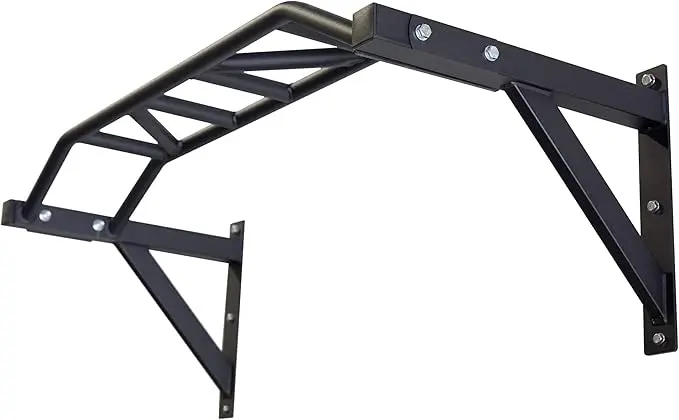
The REP Fitness Wall-Mounted Pull-Up Bar is designed for serious home and garage gyms, offering exceptional stability for a wide range of exercises, including dynamic kipping pull-ups. Its standout feature is the multi-grip arch style, which provides numerous grip options to target different muscle groups. Constructed from heavy-duty 11-gauge steel, this bar is built for high durability and stability.
PROS
- Exceptional Stability: When properly installed, it is rock-solid and suitable for dynamic movements like kipping pull-ups.
- Versatile Grip Options: The multi-grip style allows for varied workouts and better muscle targeting.
- High Weight Capacity: Its robust construction gives it a high maximum weight recommendation, accommodating nearly any user.
- Durable Construction: Made from heavy-duty 11-gauge steel designed for intense, long-term use.
CONS
- Difficult Installation: Requires precise stud finding and drilling, which can be challenging for some users.
- Potential for Wall Damage: Improper installation could lead to significant damage to your wall.
- Higher Price Point: It is more expensive than simpler doorway or less robust wall-mounted bars.
Reason to Buy: This is the best overall pull-up bar for stability and grip variety, making it the ideal choice for dedicated home gym users who need a permanent, rock-solid, and versatile training station.
Titan Fitness Wall-Mounted Pull-Up Bar | Best Value for a Sturdy, Secure Wall Mount
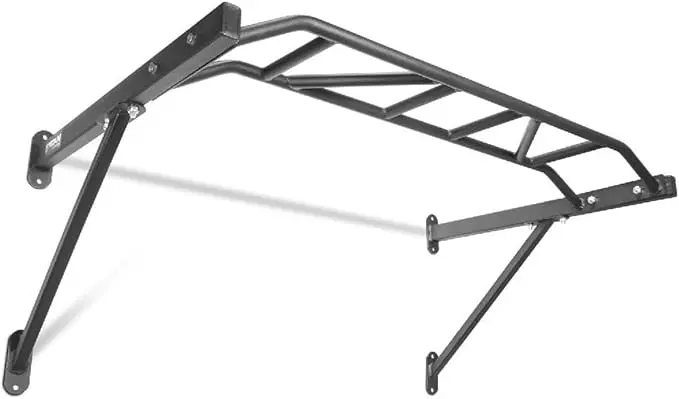
The Titan Fitness HD Multi-Grip Wall Mounted Pull-Up Bar consistently earns praise for offering exceptional stability and sturdy construction at a very competitive price point. Made from welded 12-gauge steel, it provides a solid, wobble-free platform that can handle heavy use. The multi-grip design is a key advantage, allowing for a variety of pull-up variations.
PROS
- Excellent Value: Offers robust, heavy-duty performance at a highly competitive price.
- Sturdy Construction: Users consistently highlight its solid feel and lack of wobble once properly installed.
- Versatile Grip Options: The multi-grip design enhances workout variety and helps target different muscle groups.
CONS
- Tricky Installation: Like other wall-mounted bars, it requires careful measurement and secure mounting to studs.
- Minor Finish Imperfections: Some users occasionally report minor cosmetic flaws in the paint or welds.
- Deep Profile: The 30-inch depth provides good clearance but might be too deep for very narrow spaces.
Reason to Buy: This bar represents the best value for a sturdy and secure wall-mounted option, providing high-end stability and versatility without the premium price tag.
Iron Age Doorway Bar | Best No-Drill Doorway Option for Convenience

The Iron Age Doorway Pull-Up Bar is an ideal solution for those who need a convenient, non-permanent training tool. Its greatest strength is its no-drill installation, utilizing an enhanced smart hook design that securely attaches to most door frames without leaving marks, thanks to premium silicone protectors. This makes it a perfect choice for renters or anyone who wants to avoid modifying their walls.
PROS
- No-Drill Convenience: Easy, no-drill installation is perfect for renters or those who prefer not to modify walls.
- Door Frame Protection: The smart hook design and silicone protectors effectively prevent damage to door frames.
- Portable and Storable: Can be easily removed and stored, making it great for users with limited space.
CONS
- Limited Stability: Not suitable for very aggressive or kipping movements that require rock-solid stability.
- Foam Grip Durability: The comfortable foam grips may show signs of wear and tear over extended heavy use.
- Door Frame Dependent: Relies on having a compatible and sturdy door frame within a specific size range.
Reason to Buy: This is the best no-drill doorway option for convenience, perfect for users seeking a versatile and space-saving pull-up solution without any permanent installation.
Best Grip Trainers for Strength & Injury Prevention
IronMind Captains of Crush | Best for Building Elite-Level Crushing Grip Strength
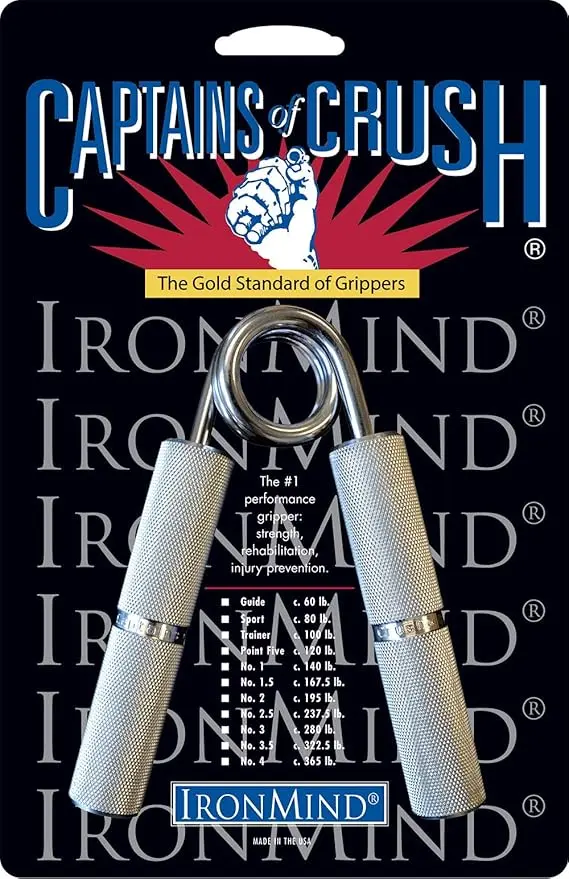
The IronMind Captains of Crush (COC) grippers are widely considered the gold standard for anyone serious about building elite-level crushing grip strength. Their reputation is built on unmatched quality, with a construction of aircraft-grade aluminum handles and proprietary alloy steel springs. A key feature is the availability of 11 distinct strength levels, allowing for highly specific and measurable progressive overload. These are some of the best illstrength trainers available.
PROS
- Unmatched Quality & Durability: Known for their superior build quality that far outlasts cheaper alternatives.
- Effective for Strength Gains: Many users report significant improvements in crushing grip strength and forearm size.
- Precise Resistance Levels: 11 distinct strengths allow for highly specific and measurable progress.
- Industry Gold Standard: Recognized globally as the benchmark for grip strength training.
CONS
- Aggressive Knurling: The sharp knurling provides excellent grip but can be very harsh on the skin, especially for beginners.
- High Price Point: The premium quality comes at a higher cost than casual grip trainers.
- Limited Versatility: Primarily designed for crushing grip and is less effective for pinch or support grip.
Reason to Buy: This is the best tool for serious athletes aiming to build elite-level crushing grip strength, offering unmatched quality and a precise system for progressive training.
Prohands Gripmaster | Best for Isolating and Training Individual Finger Strength
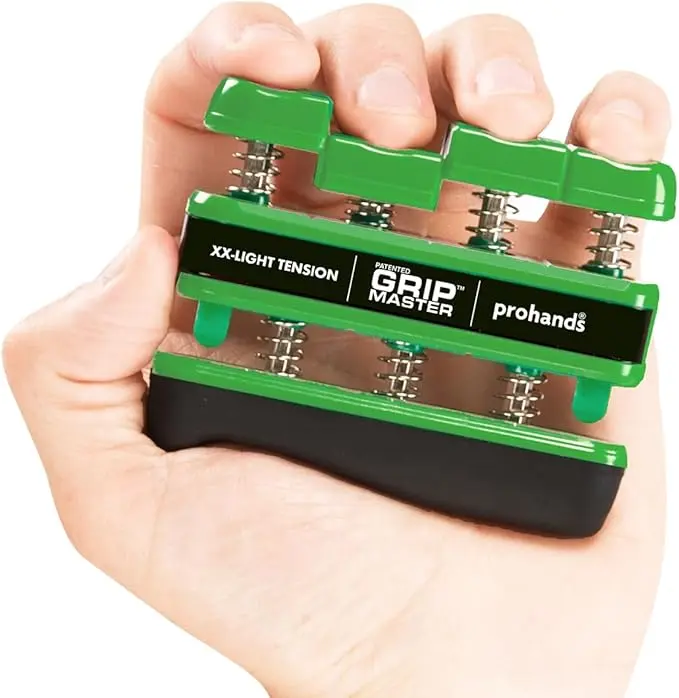
The Prohands Gripmaster differentiates itself with a unique spring-loaded design that allows you to isolate and strengthen each finger individually. This feature is highly valued not only by climbers but also by musicians and individuals in rehabilitation, as it is exceptionally effective for addressing strength imbalances between fingers. The device is well-made and available in multiple tension levels to accommodate various needs.
PROS
- Individual Finger Isolation: Its key feature allows for targeted strengthening of each finger, which is crucial for dexterity and addressing imbalances.
- Versatile Application: Praised for its effectiveness for athletes, musicians, and those undergoing rehabilitation.
- Effective for Dexterity: Excellent for improving not just strength but also finger dexterity and hand endurance.
- Progressive Training: Available in different tension levels to accommodate various strength needs and allow for progression.
CONS
- Limited Top-End Resistance: Very strong users might find the highest tension levels insufficient for continued strength gains.
- Plastic Construction: While durable, some users may prefer the feel of a more robust, non-plastic tool.
- Potential for Squeaking: A small number of users report that the springs may squeak over time.
Reason to Buy: It is the best tool for isolating and training individual finger strength, making it ideal for correcting imbalances, targeted rehabilitation, or any activity requiring high levels of finger dexterity.
Metolius GripSaver Plus | Best All-in-One Tool for Flexor and Extensor Muscle Balance
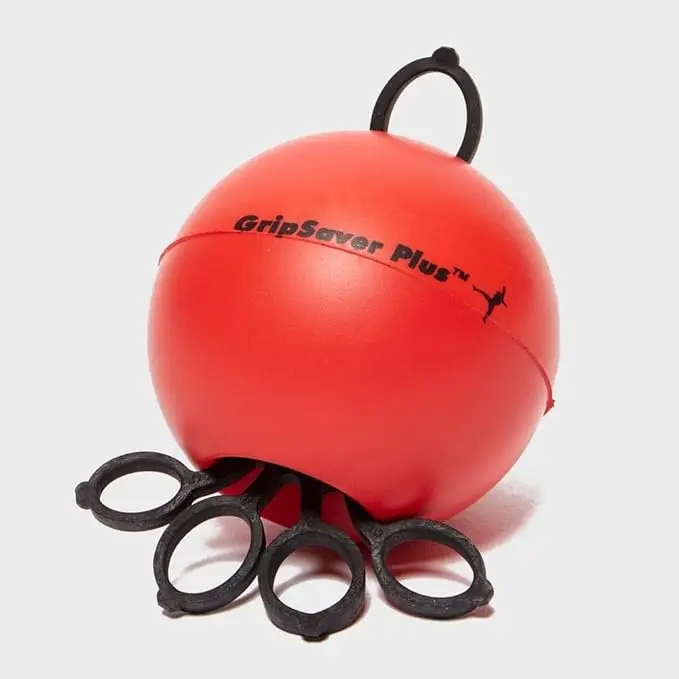
The Metolius GripSaver Plus is an essential tool designed specifically for muscle rehabilitation and injury prevention in climbers. Its key advantage is its all-in-one design that works to balance the flexor (gripping) and extensor (opening) muscles of the hand and forearm. This is crucial for climbers, who heavily overdevelop their flexor muscles, helping to prevent and treat common issues like climber’s elbow. This approach shows the strength difference that balanced training can make.
PROS
- Promotes Muscle Balance: Its primary function is to work both flexor and extensor muscles, which is crucial for preventing injuries.
- Effective for Rehab: Users frequently praise its effectiveness in rehabilitating climbing-related hand and forearm injuries.
- Easy to Use: The simple and straightforward design makes it accessible for consistent training and use.
- Portable: Its small size makes it convenient for warm-ups, cool-downs, or active recovery sessions anywhere.
CONS
- Limited for Strength Gains: Not designed for building maximum strength; resistance levels are geared towards rehab and maintenance.
- Loop Durability: The finger loops may experience wear and tear over extended, heavy use.
- Niche Application: Primarily designed for climbers and those needing hand/finger rehab, not for general fitness enthusiasts.
Reason to Buy: This is the best all-in-one tool for promoting long-term hand health and muscle balance, making it an essential purchase for any climber focused on injury prevention and rehabilitation.
Best Resistance Bands for Climbers
TheraBand Professional Non-Latex Bands | Best for Rehab, Warm-ups, and Low-Intensity Work
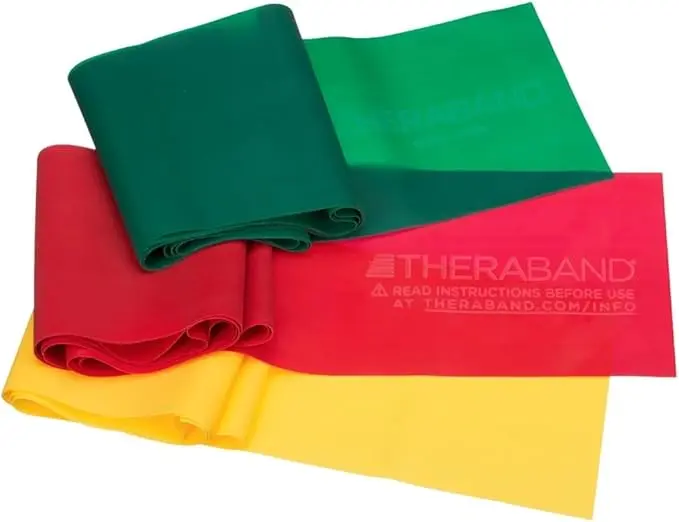
TheraBand Professional Non-Latex Bands are a staple in physical therapy and are ideal for climbers seeking a tool for rehabilitation, warm-ups, and low-intensity strength work. Their most significant feature is the non-latex material, making them a safe option for anyone with latex allergies. They are highly versatile and allow for controlled resistance throughout an entire range of motion.
PROS
- Non-Latex Material: Safe and comfortable for users with latex allergies or sensitivities.
- Highly Versatile: Adaptable for a wide array of rehab and low-intensity exercises.
- Effective for Rehab: Widely used and recommended by physical therapists for recovery and injury prevention.
- Portable and User-Friendly: Extremely portable and easy to use, with a clear progression system indicated by color.
CONS
- Limited High Resistance: Not suitable for heavy strength training or replacing free weights for maximal gains.
- Durability with Heavy Use: Can stretch or tear over extended, very heavy use, though this is uncommon with proper care.
Reason to Buy: TheraBands are the best choice for climbers focused on rehabilitation, mobility, and low-intensity conditioning, especially for those with latex sensitivities.
FitCord X-Over Resistance Band | Best Tube Bands with a Safety Sleeve
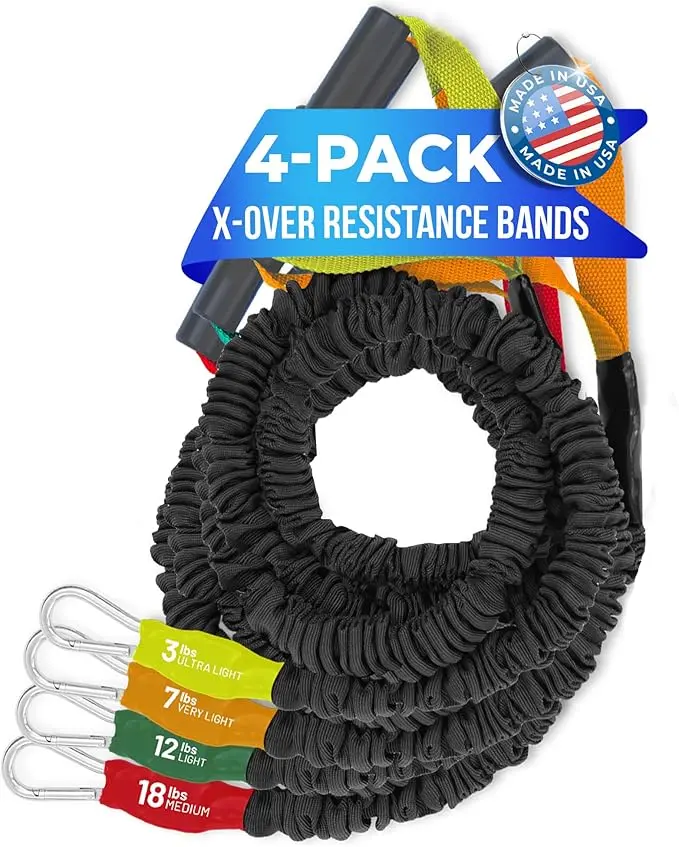
The FitCord X-Over Resistance Band is designed with a key feature that sets it apart: a robust fabric safety sleeve. This sleeve encases the rubber tubing, protecting the user from potential snap-backs if the band breaks and preventing over-stretching, which significantly extends the life of the band. This added safety and durability is highly praised by users, making it a reliable tool for dynamic warm-ups and shoulder health exercises.
PROS
- Safety Sleeve: The fabric sleeve is a key safety feature that prevents snapping and enhances durability.
- Excellent Durability: The robust construction and protective sleeve make the bands highly durable for rigorous use.
- Effective for Shoulder Health: Particularly popular among athletes for shoulder strengthening and injury prevention.
CONS
- Higher Price Point: The premium safety features come at a higher cost compared to basic resistance bands.
- Bulkier Design: The safety sleeve makes them slightly bulkier and less portable than traditional flat bands.
- Limited High Resistance: May not offer sufficient resistance for users seeking to perform very heavy lifting exercises.
Reason to Buy: These are the best tube bands for any user who prioritizes safety. The protective sleeve prevents dangerous snap-backs and enhances durability, making them a superior choice for long-term use.
Best Pinch Blocks for Targeted Thumb Strength
Lattice Training Quad Block | Best for Reliable Testing and Targeted Pinch Training
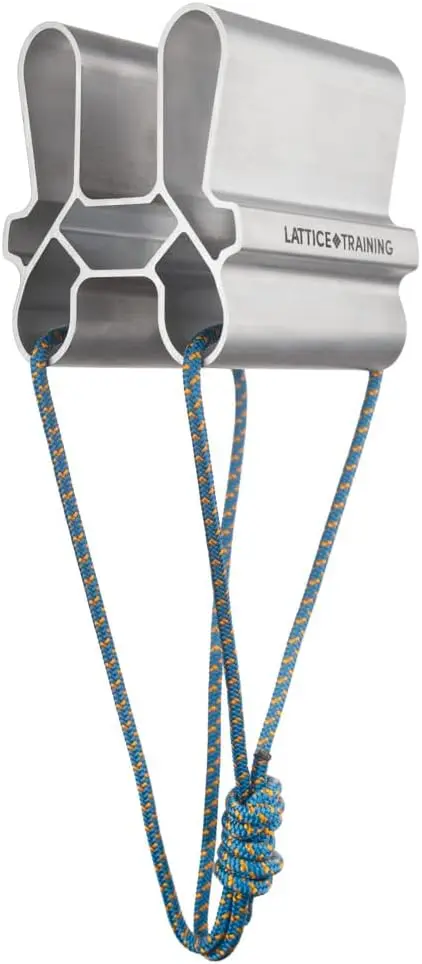
The Lattice Training Quad Block is a specialized tool engineered for climbers who want to reliably test and improve their pinch strength. Made from anodized aluminum with mechanical depth stops, its construction is focused on precision and consistency, ensuring that training and assessment results are accurate and repeatable. The block features five distinct grip positions and includes access to a free assessment to help identify weaknesses.
PROS
- Reliable & Consistent Testing: Mechanical depth stops ensure consistent testing and training results for tracking progress.
- Targeted Pinch Training: The specific grip positions are excellent for isolating and strengthening various pinch grips.
- Highly Portable: Its compact size and robust construction make it ideal for warm-ups and training on the go.
- Data-Driven: Comes with unlimited access to a free assessment and report to identify strengths and weaknesses.
CONS
- Premium Price: This high-quality, specialized tool comes with a premium price tag.
- Limited Grip Variety: It is not a comprehensive hangboard and focuses specifically on testing and pinch training.
- Learning Curve for Assessment: Some users may find it challenging to interpret the assessment results without further guidance.
Reason to Buy: It is the best tool for the data-driven climber looking to precisely measure, target, and improve their pinch strength with a reliable and consistent training device.
Best Campus Rungs for Power Training
Workshop 19/50 Campus Rungs G | Best Value Set for Building a Home Campus Board
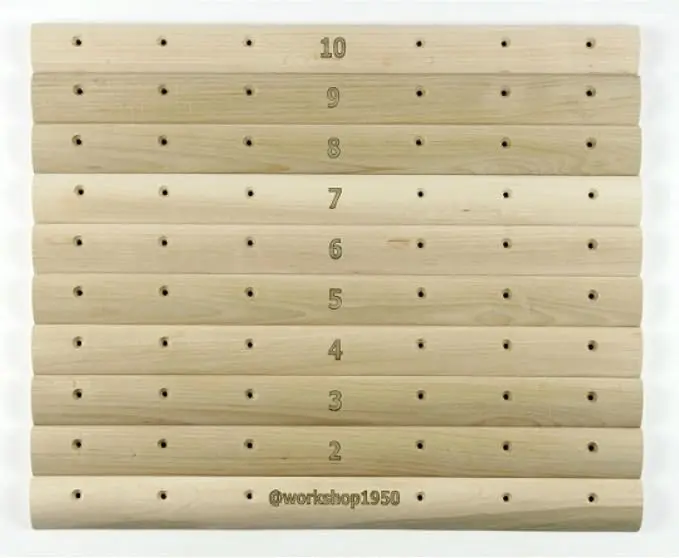
The Workshop 19/50 Campus Rungs offer excellent value for climbers looking to build a complete campus board at home. Sold as a comprehensive set of 10, these rungs are made from alder wood, which provides a natural, comfortable, and skin-friendly grip. A significant advantage is the availability of multiple thicknesses, which allows for clear progressive training as a climber’s strength improves.
PROS
- Excellent Value: Offers robust, heavy-duty performance at a highly competitive price.
- Sturdy Construction: Users consistently highlight its solid feel and lack of wobble once properly installed.
- Versatile Grip Options: The multi-grip design enhances workout variety and helps target different muscle groups.
CONS
- Tricky Installation: Like other wall-mounted bars, it requires careful measurement and secure mounting to studs.
- Minor Finish Imperfections: Some users occasionally report minor cosmetic flaws in the paint or welds.
- Deep Profile: The 30-inch depth provides good clearance but might be too deep for very narrow spaces.
Reason to Buy: This is the best value set for building a home campus board, offering multiple sizes for clear progression and a quality wood feel at an affordable price point.
Best Gymnastic Rings for Core & Stability
Vulken Elite Wood Gymnastics Rings | Best for Easy Adjustment with Numbered Straps

The Vulken Elite Wood Gymnastics Rings are a top choice for building comprehensive core and upper-body strength due to their exceptional versatility and user-friendly design. Their most praised feature is the adjustable numbered straps, which allow for quick, easy, and precise height adjustments, ensuring consistency between workouts. The set is highly versatile, including handles, foot straps, and a door attachment to expand the range of possible exercises.
PROS
- Easy Adjustment with Numbered Straps: The numbered straps make height adjustments quick, precise, and perfectly even every time.
- Highly Versatile Set: The inclusion of handles, foot straps, and a door attachment makes the set incredibly versatile for a wide range of exercises.
- High-Quality Build: Many users commend the sturdy build quality of both the wooden rings and the durable straps.
- Excellent Grip: The wooden rings provide a natural, comfortable, and secure grip that is preferred by many athletes.
CONS
- Door Frame Dependent: The included door attachment relies on a sturdy door and frame, which may not be suitable for all homes.
- Steep Learning Curve: Gymnastics rings can be challenging for beginners and require proper instruction to use safely and effectively.
- Requires Ample Space: Effective use requires sufficient overhead clearance and space for full body movements.
Reason to Buy: These rings are the best option for users who value ease of adjustment and versatility. The numbered straps and included accessories create a comprehensive and user-friendly system for bodyweight and stability training.
Final Thoughts on Building Your Home Training Arsenal
The most effective approach is to view this strength training equipment as a complementary system. Start by identifying your primary weakness and choose the tool that targets it most directly. Education is paramount. Understanding why a tool works based on principles like specificity and progressive overload is more important than the specific product you buy. This knowledge empowers you to train smarter and safer.
Prioritize consistency and recovery above all else. The best training equipment in the world is useless without a sustainable routine and adequate rest to allow your body to adapt and get stronger. There is no single “best” piece of equipment for everyone. The ideal tools for you depend entirely on your current skill level, specific climbing goals, available space, and budget. Use this guide to make an informed decision that aligns with your personal climbing journey. Start simple. A pull-up bar and a set of resistance bands can form an incredibly effective and affordable foundation for any at-home training program. You can always add more specialized tools like a hangboard or campus board as your strength and commitment grow.
Frequently Asked Questions about Rock Climbing Training Equipment
As a beginner, what is the single most important piece of training equipment I should get? +
How often should I use a hangboard? +
Can I build all my own training equipment? +
Do I need all seven of these tools to get stronger? +
We are a participant in the Amazon Services LLC Associates Program, an affiliate advertising program designed to provide a means for sites to earn advertising fees by advertising and linking to Amazon.com. As an Amazon Associate I earn from qualifying purchases. We also participate in other affiliate programs. The information provided on this website is provided for entertainment purposes only. We make no representations or warranties of any kind, expressed or implied, about the completeness, accuracy, adequacy, legality, usefulness, reliability, suitability, or availability of the information, or about anything else. Any reliance you place on the information is therefore strictly at your own risk. Additional terms are found in the terms of service.











